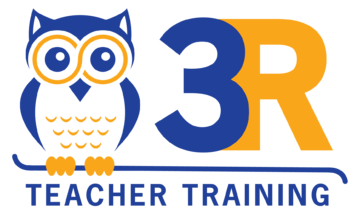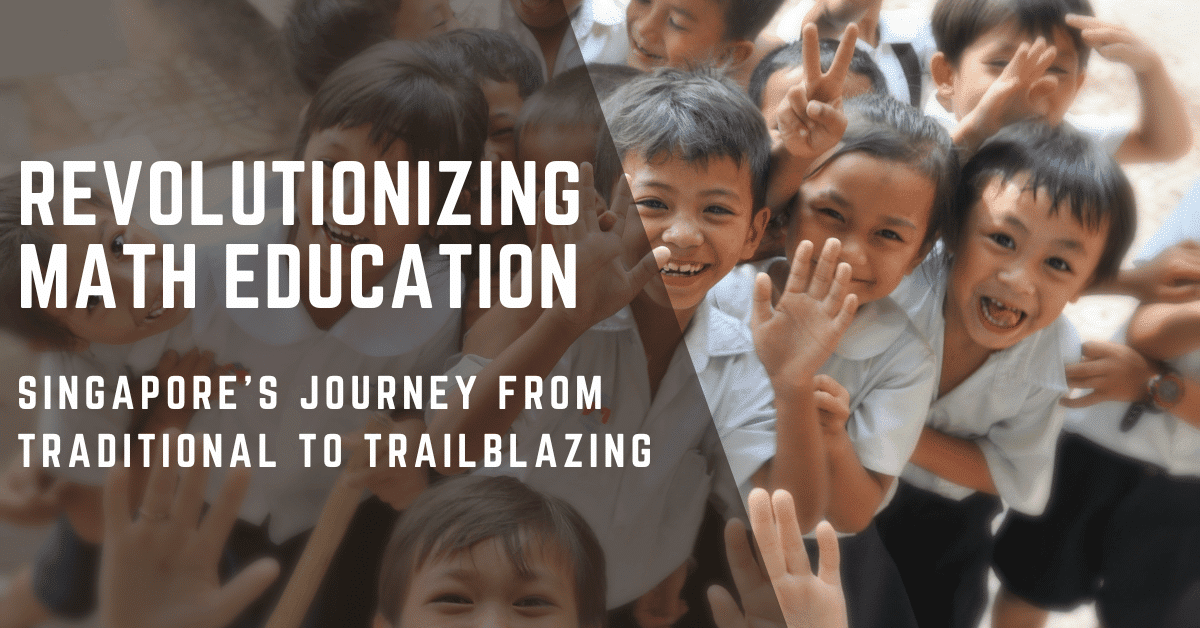When you think about world leaders in mathematics education, Singapore undoubtedly stands at the forefront. This tiny island nation has consistently outperformed larger countries in international assessments like the Programme for International Student Assessment (PISA) and the Trends in International Mathematics and Science Study (TIMSS). But what lies behind this extraordinary success?
In this exploration, we'll delve into the ‘before and after' of Singapore's math education – from its initial struggles to its remarkable triumph. We'll unravel how the melding of these five influential thinkers' ideas created an educational tapestry that improved test scores and transformed the nature of learning mathematics. Whether you're an educator or a student, this story is a testament to the power of theory-informed practice and a source of inspiration for all who value the art and science of teaching.
Join us on this enlightening journey through Singapore's math education revolution, a narrative that takes us from traditional approaches to innovative, world-leading strategies.
Part 1: Setting the Stage (Before)
The Early Landscape of Mathematics Education
In the nascent days of its independence in the 1960s, Singapore, much like any young nation, faced the colossal task of building its educational infrastructure. The focus then was more on establishing schools and ensuring basic literacy and numeracy among its populace. Mathematics education, in these early days, followed a traditional, almost utilitarian approach. The emphasis was on rote learning and procedural proficiency – a reflection of the immediate need to equip students with fundamental skills.
The Global Context: PISA and TIMSS
As Singapore sought its place on the global stage, international benchmarks like the Programme for International Student Assessment (PISA) and the Trends in International Mathematics and Science Study (TIMSS) began to gain prominence. These assessments, focusing on practical and applied knowledge, revealed a stark contrast between Singapore’s traditional methodologies and the evolving global standards in math education. The results from the early years of these assessments served as a wake-up call, highlighting the need for a paradigm shift.
Traditional Teaching Methods
Classrooms in Singapore during this era were characterized by teacher-centered instruction, where the teacher was the primary source of knowledge, and students were passive recipients. The pedagogy centered around memorization and practice of standard procedures, with little emphasis on understanding or application. Math problems were largely context-free, focusing on numerical manipulation rather than real-world application.
The Emerging Challenges
As Singapore's economy began to grow and diversify, the limitations of this approach became increasingly apparent. The need for a workforce capable of critical thinking and problem-solving in a rapidly modernizing world was at odds with the prevailing educational practices. Moreover, the one-size-fits-all approach failed to cater to the diverse learning needs of students, often leaving those who could not keep pace behind.
Part 2: Theoretical Foundations of Reform
Embracing Change: The Influence of Educational Theorists
As Singapore grappled with the limitations of its traditional education system, a wave of reform began, deeply influenced by the work of several key educational theorists. These thinkers provided the theoretical bedrock upon which Singapore would build its new approach to mathematics education.
Jean Piaget: Understanding Cognitive Development
Jean Piaget's theories on cognitive development played a pivotal role. Piaget proposed that children move through distinct stages of cognitive development, each with its own characteristics and limitations. This understanding led to a curriculum that was more developmentally appropriate, ensuring that mathematical concepts were taught in alignment with students' cognitive stages.
Richard R. Skemp: Relational vs. Instrumental Understanding
Richard R. Skemp's distinction between relational and instrumental understanding in mathematics had a profound impact. Skemp advocated for a deeper understanding of mathematical concepts, as opposed to mere procedural proficiency. This philosophy guided a shift in teaching methods, focusing more on understanding ‘why' behind the ‘how' in mathematical processes.
Lev Vygotsky: The Social Context of Learning
Lev Vygotsky's social development theory, especially the Zone of Proximal Development (ZPD) concept, underscored the importance of collaborative learning. Vygotsky's ideas led to an increased emphasis on group work and peer-to-peer learning in math classes, fostering a more interactive and supportive learning environment.
Jerome Bruner: Scaffolding and Discovery Learning
Jerome Bruner's concept of scaffolding, where learners are provided with support structures to achieve higher levels of understanding, was instrumental in developing new teaching methodologies. Bruner's emphasis on discovery learning, where students construct their own understanding, also influenced the design of math curricula.
Zoltan Dienes: Play and Exploration in Learning
Lastly, Zoltan Dienes' principles of learning mathematics through play and exploration were reflected in the incorporation of manipulatives and hands-on activities in math lessons. This approach made math more engaging for students and reinforced their conceptual understanding.
Transitioning Theories into Practice
These theoretical underpinnings necessitated a complete overhaul of the traditional mathematics curriculum. Teacher training programs were revamped to equip educators with the skills to implement these new pedagogical approaches. Textbooks and teaching materials were redesigned to align with the principles of these educational theorists, marking the beginning of a new era in Singapore's math education.
Part 3: Implementation and Impact (After)
Bringing Theory to Life in the Classroom
The transition from theory to practice marked a significant turning point in Singapore's mathematics education. Classrooms transformed from places of passive learning to vibrant hubs of inquiry and exploration. The adoption of these new teaching methodologies was not just a change in technique but a cultural shift in the perception of mathematics education.
The Role of PISA and TIMSS in Measuring Success
The effectiveness of these reforms was underscored by Singapore's remarkable performance in the Programme for International Student Assessment (PISA) and the Trends in International Mathematics and Science Study (TIMSS). These international benchmarks provided concrete evidence of the positive impact of the reforms. Students from Singapore consistently ranked at the top or near the top in these assessments, showcasing the success of a more holistic and understanding-based approach to mathematics education.
A New Classroom Experience
In the new Singaporean math classroom, teachers became learning facilitators rather than mere knowledge dispensers. Interactive and collaborative activities became commonplace. Concepts were taught through real-world applications, making mathematics more relatable and less abstract. The focus shifted to problem-solving and critical thinking, encouraging students to understand the ‘why' and ‘how' of mathematics, not just the ‘what'.
Personalized Learning and Ongoing Innovations
The inclusion of differentiated learning strategies ensured that each student's unique needs and learning pace were respected and catered to. Technology began playing a crucial role, integrating digital tools to provide personalized and interactive learning experiences. The continuous evolution of teaching methodologies showed Singapore's commitment to staying at the forefront of educational innovation.
Reflections and Future Directions
The transformation of Singapore's mathematics education serves as a powerful case study on the effective application of educational theories in practice. It underscores the importance of continual assessment and adaptation in teaching methodologies. Looking ahead, Singapore continues to explore new frontiers in education, preparing its students not just for exams but for a lifetime of learning and problem-solving.
Conclusion:
The story of Singapore's journey in mathematics education is a compelling testament to the power of integrating theory into practice. It's a narrative that began with traditional, rote-learning methods and evolved into an innovative, world-class educational system deeply rooted in the insights of Piaget, Skemp, Vygotsky, Bruner, and Dienes.
This transformation didn't just elevate Singapore to the top of international rankings like PISA and TIMSS; it revolutionized the very nature of mathematics teaching and learning. The shift from a teacher-centric, memorization-based approach to one that emphasizes understanding, problem-solving, and collaborative learning exemplifies the profound impact that thoughtful, research-based educational reform can have.
For educators and students around the world, Singapore’s journey offers valuable lessons. It shows that embracing change, grounded in solid educational research, can lead to remarkable outcomes. It's a reminder that education is an ever-evolving field where the willingness to adapt and innovate is key to success.
As we reflect on Singapore's achievements in math education, it becomes clear that the journey is as important as the destination. It's a journey that continues to inspire, challenge, and motivate educators and learners alike, reminding us that in the quest for educational excellence, learning never stops.

